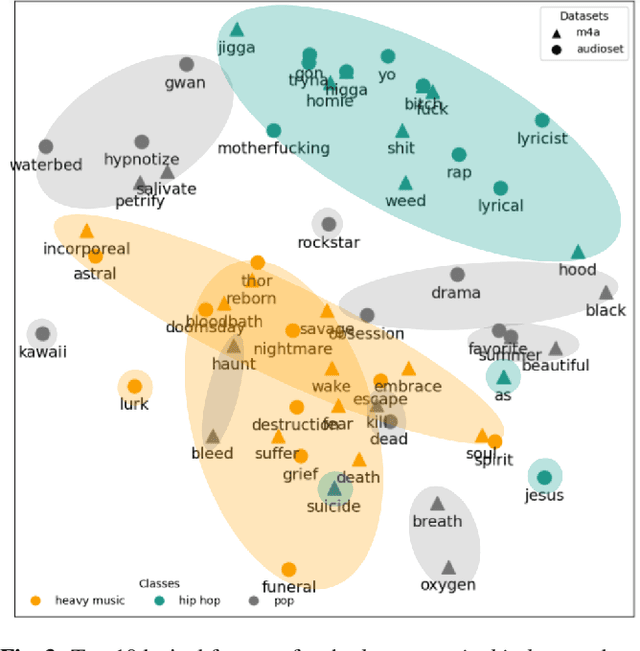Orfeas Menis Mastromichalakis
Assumed Identities: Quantifying Gender Bias in Machine Translation of Ambiguous Occupational Terms
Mar 06, 2025Abstract:Machine Translation (MT) systems frequently encounter ambiguous scenarios where they must assign gender to certain occupations when translating without explicit guidance or contextual cues. While individual translations in such cases may not be inherently biased, systematic patterns-such as the repeated association of certain professions with specific genders-can emerge, reflecting and perpetuating societal stereotypes. This ambiguity challenges traditional instance-level single-answer evaluation approaches, as no single gold standard translation exists. To address this, we propose an approach that evaluates gender bias through aggregated model responses. Specifically, we introduce a methodology to detect gender imbalances between source texts and translations, a benchmarking dataset with ambiguous English inputs, and probability-based metrics to quantify a model's divergence from normative standards or reference distributions.
AILS-NTUA at SemEval-2025 Task 4: Parameter-Efficient Unlearning for Large Language Models using Data Chunking
Mar 04, 2025Abstract:The Unlearning Sensitive Content from Large Language Models task aims to remove targeted datapoints from trained models while minimally affecting their general knowledge. In our work, we leverage parameter-efficient, gradient-based unlearning using low-rank (LoRA) adaptation and layer-focused fine-tuning. To further enhance unlearning effectiveness, we employ data chunking, splitting forget data into disjoint partitions and merging them with cyclically sampled retain samples at a pre-defined ratio. Our task-agnostic method achieves an outstanding forget-retain balance, ranking first on leaderboards and significantly outperforming baselines and competing systems.
GOSt-MT: A Knowledge Graph for Occupation-related Gender Biases in Machine Translation
Sep 17, 2024



Abstract:Gender bias in machine translation (MT) systems poses significant challenges that often result in the reinforcement of harmful stereotypes. Especially in the labour domain where frequently occupations are inaccurately associated with specific genders, such biases perpetuate traditional gender stereotypes with a significant impact on society. Addressing these issues is crucial for ensuring equitable and accurate MT systems. This paper introduces a novel approach to studying occupation-related gender bias through the creation of the GOSt-MT (Gender and Occupation Statistics for Machine Translation) Knowledge Graph. GOSt-MT integrates comprehensive gender statistics from real-world labour data and textual corpora used in MT training. This Knowledge Graph allows for a detailed analysis of gender bias across English, French, and Greek, facilitating the identification of persistent stereotypes and areas requiring intervention. By providing a structured framework for understanding how occupations are gendered in both labour markets and MT systems, GOSt-MT contributes to efforts aimed at making MT systems more equitable and reducing gender biases in automated translations.
MusicLIME: Explainable Multimodal Music Understanding
Sep 16, 2024



Abstract:Multimodal models are critical for music understanding tasks, as they capture the complex interplay between audio and lyrics. However, as these models become more prevalent, the need for explainability grows-understanding how these systems make decisions is vital for ensuring fairness, reducing bias, and fostering trust. In this paper, we introduce MusicLIME, a model-agnostic feature importance explanation method designed for multimodal music models. Unlike traditional unimodal methods, which analyze each modality separately without considering the interaction between them, often leading to incomplete or misleading explanations, MusicLIME reveals how audio and lyrical features interact and contribute to predictions, providing a holistic view of the model's decision-making. Additionally, we enhance local explanations by aggregating them into global explanations, giving users a broader perspective of model behavior. Through this work, we contribute to improving the interpretability of multimodal music models, empowering users to make informed choices, and fostering more equitable, fair, and transparent music understanding systems.
Beyond One-Size-Fits-All: Adapting Counterfactual Explanations to User Objectives
Apr 12, 2024Abstract:Explainable Artificial Intelligence (XAI) has emerged as a critical area of research aimed at enhancing the transparency and interpretability of AI systems. Counterfactual Explanations (CFEs) offer valuable insights into the decision-making processes of machine learning algorithms by exploring alternative scenarios where certain factors differ. Despite the growing popularity of CFEs in the XAI community, existing literature often overlooks the diverse needs and objectives of users across different applications and domains, leading to a lack of tailored explanations that adequately address the different use cases. In this paper, we advocate for a nuanced understanding of CFEs, recognizing the variability in desired properties based on user objectives and target applications. We identify three primary user objectives and explore the desired characteristics of CFEs in each case. By addressing these differences, we aim to design more effective and tailored explanations that meet the specific needs of users, thereby enhancing collaboration with AI systems.
Towards explainable evaluation of language models on the semantic similarity of visual concepts
Sep 08, 2022



Abstract:Recent breakthroughs in NLP research, such as the advent of Transformer models have indisputably contributed to major advancements in several tasks. However, few works research robustness and explainability issues of their evaluation strategies. In this work, we examine the behavior of high-performing pre-trained language models, focusing on the task of semantic similarity for visual vocabularies. First, we address the need for explainable evaluation metrics, necessary for understanding the conceptual quality of retrieved instances. Our proposed metrics provide valuable insights in local and global level, showcasing the inabilities of widely used approaches. Secondly, adversarial interventions on salient query semantics expose vulnerabilities of opaque metrics and highlight patterns in learned linguistic representations.
 Add to Chrome
Add to Chrome Add to Firefox
Add to Firefox Add to Edge
Add to Edge